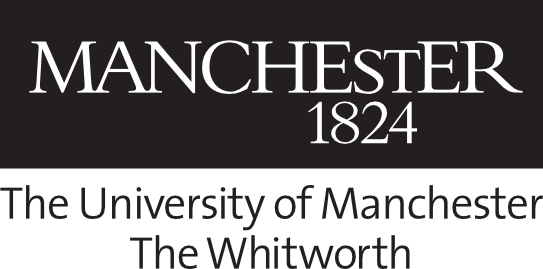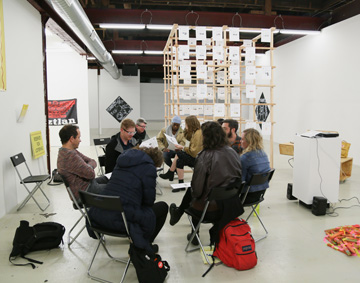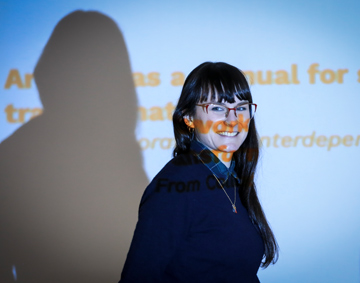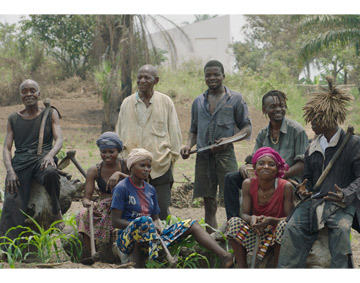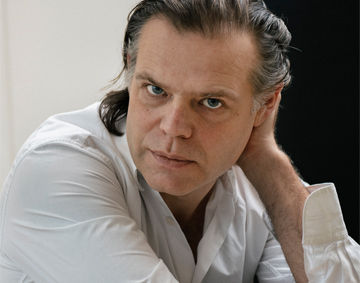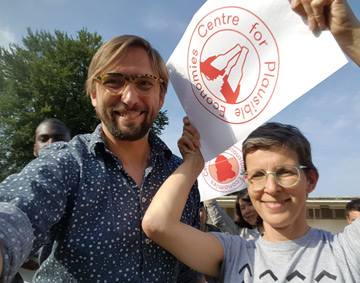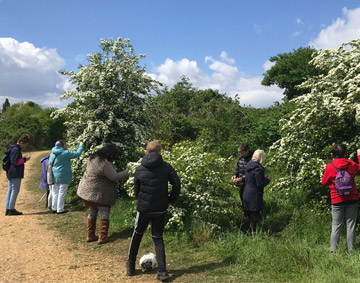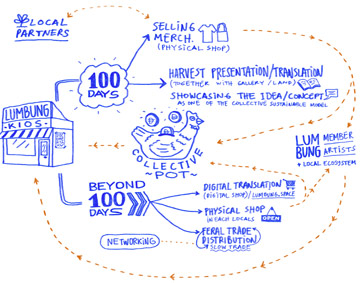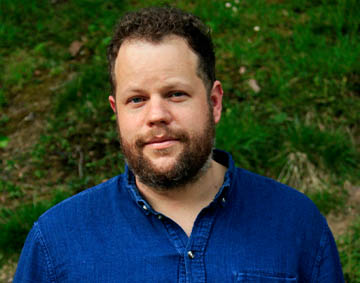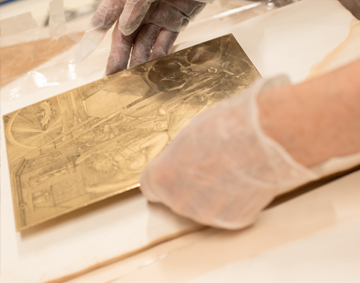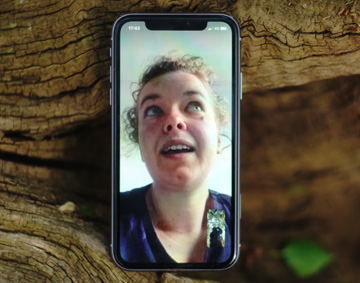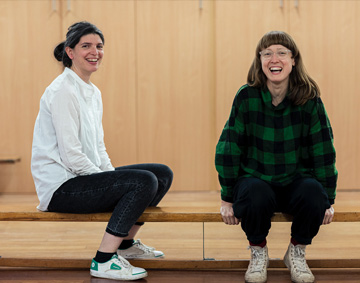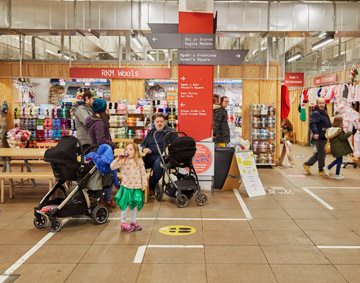About the Artists
Economics the Blockbuster: It’s not Business as Usual
Discover more about all the artists featured in Economics the Blockbuster: It’s not Business as Usual, on the page below.
About the exhibition: Economics the Blockbuster: It’s not Business as Usual
30 June – 22 October 2023
#EconomicsTheBlockbuster
-
The Asociación de Arte Útil
The Asociación de Arte Útil (AAU) was founded as part of The Museum of Arte Útil, a project initiated by Tania Bruguera in 2013 in collaboration with Queens Museum and the Immigrant Movement International in Corona, Queens; Van Abbemuseum, Eindhoven; and Grizedale Arts, Coniston. At the core of the Asociación is the Arte Útil archive, conceived as a free database of almost 300 case studies featuring artistic practices that produce beneficial outcomes for their users and apply artistic strategies beyond the realm of art. The AAU is shaped as a self-organised and nomadic environment operating beyond the museum context while reusing discourses and techniques originating in it.
-
Alessandra Saviotti
Alessandra Saviotti is a curator and art educator. She is a PhD researcher at the Liverpool John Moores University and an advisor for Unidee Residency Programmes at Cittadellarte - Fondazione Michelangelo Pistoletto. She focuses on socially engaged art, collaborative practices, and Arte Útil (art as a tool). Since 2014 she has been a member of the Asociación de Arte Útil, aiming to emancipate usership around the Arte Útil Archive. Alessandra has curated programmes and delivered talks & workshops at documenta15 as part of Instituto de Artivismo Hannah Arendt; Yerba Buena Center for the Arts, San Francisco; Van Abbemuseum, Eindhoven; SALT, Istanbul; MAXXI, Rome and many more.
-
CATPC
CATPC - in full ‘Cercle d’Art des Travailleurs de Plantation Congolaise’ or ‘Congolese Plantation Workers Art League’ – is an art cooperative of plantation workers based in Lusanga, Democratic Republic of the Congo. Founded in 2014 with environmental activist René Ngongo, the cooperative is most known for their sculptures in river clay, which are reproduced in products from the plantation: palm fat, cocoa, and sugar. In 2017, the New York Times named their solo show at SculptureCenter “the most challenging show of the year”. CATPC has built a practice of securing hundreds of acres of former plantation land for future generations with the proceeds of their art. In the midst of that land, they built a museum, the White Cube Lusanga, and established worker-owned, ecological, and inclusive food gardens: the Post Plantation.
-
Renzo Martens
Renzo Martens studied political science and art and is an artist who devises methodologies through which critique can miraculously resolve inequality. After having made the films Episode I (2003) and Episode III: Enjoy Poverty (2009), Martens established the arts institute Human Activities and its 'reverse gentrification program' on a plantation in the Democratic Republic of the Congo. Together with the plantation workers of the Cercle d’Art des Travailleurs de Plantation Congolaise (CATPC), he employs artistic critique to build a new world – not symbolically, but in material terms. Together, they opened the White Cube Lusanga which is meant to repatriate capital and visibility to communities of plantation workers. White Cube (2020), Martens’ latest film, shows how Congolese plantation workers set a new precedent: they successfully co-opt the concept of the ‘white cube’ to liberate their land and turn it into forests.
-
Centre for Plausible Economies
Centre for Plausible Economies (CPE) was initiated in 2018 by Kathrin Böhm and Kuba Szreder, to bring together artistic imagination and economic thinking. CPE believes that everybody is exposed to economic forces, but nobody seems to be in control. Responding to this frustration with upbeat pragmatism, CPE serves as a platform for mapping and redrawing economic systems. Recent initiatives of CPE include an ethical and pragmatic compass of Interdependent Art Worlds (The Showroom London and Sternberg Press) and (Re-)Drawing the Economy a multi-local research and workshop programme together with the Community Economies Institute. CPE has developed workshop and seminar programmes for Zeppelin University, Friedrichshafen; Warsaw Biennial; and Alanus University, Alfter. CPE publishes texts, visual essays and manifestos on interdependent art worlds, icebergian economies of contemporary art, and artistic means of reclaiming the economy.
-
Company Drinks
Company Drinks is a community space and community enterprise based in Barking and Dagenham, London. It began as an art commission by Myvillages and registered as a Community Interest Company in 2015. Company Drinks collaborates and champions the ideas of those around them, and encourages people to re-imagine new ways of working, trading and existing together, through conversation, care and good company. Like the seasons, Company Drinks changes and adapts, and is shaped by those who are involved. It can be art, it can be a community centre, it can be a social enterprise - it can be what those who engage want it to be. Company Drinks has been part of exhibitions and art events at Middlesbrough Institute of Modern Art, Middlesbourough, The Museum of Contemporary Art, Warsaw; Turf, London; and the V&A Museum, London.
-
lumbung Kios
lumbung Kios is a network of decentralized and self-run Kios (Indonesian for kiosk), to sell products at different locations. Its mission is to create a sustaining model to raise an income through the sales of goods produced by the lumbung members, lumbung artists, and their local ekosistems. lumbung Kios is an attempt to decentralize distribution mechanisms and explore alternative economies. The aim is to keep the environmental impact as low as possible.
-
Owen Griffiths
Owen Griffiths is a socially engaged artist working with food systems, land use, and collaborative processes. His practice explores the possibilities of art to create new frameworks, resources, and systems, including curated events, dialogues, codesigned spaces, gardens, and feasts. Griffiths invites us to ask what an equitable future could look like at a time of increasing crisis. His work is rooted in long-term relationships with communities where he lives and works in post-industrial south Wales and invites radical change through the practice of ‘digging where you stand’. He is a graduate of the School of Walls & Space at The Royal Danish Academy and leads Ways of Working, a social enterprise working for an intersectional understanding of social and climate justice in Wales. His projects are part of the Arte Útil archive and he collaborates with curator and writer Alessandra Saviotti to develop projects, toolkits, and exhibitions.
-
Goldin+Senneby
Goldin+Senneby is a Stockholm-based artist subject. Since 2004 their work has explored the structural correspondence between conceptual art and finance capital, drawn to its (il)logical conclusions. Recent works include Headless, a ghostwritten detective novel about an offshore company in the Bahamas (2007-2015); Zero Magic, a magic trick for the financial markets (2016); and Eternal Employment, a proposal for eternal employment at a train station (2026-). Currently, their practice is mutating: drawing on bodily experiences of an autoimmune disease, they are staging a fiction with an "autoimmune tree" as the main protagonist.
-
Rosalie Schweiker
Rosalie Schweiker is an artist, grower and organiser. With Joon Lynn Goh and Diana Damian Martin, she co-directs Migrants In Culture, a migrant-led design agency. Recent qualifications and awards include: Paul Hamlyn Artist Award (2020), Arts Council England DYCP (2022) and Fruit and Vegetable Gardener Level 2 (2021).
-
The Alternative School of Economics
The Alternative School of Economics is a collaboration between artists Ruth Beale and Amy Feneck, initiated in 2012. As an alternative school, they link artists’ practice with self-education to expand and reclaim the study of economics and economies. They are interested in reciprocal modes of learning and making, collaborating directly with communities and individuals from parents groups to sociologists, poets to union activists, economists, and young people, producing artworks as forms of activation, dissemination, and reflection. Recent projects include Artists’ Economies, UKS, Oslo; The End of the Present, Arts Catalyst, Sheffield; True Currency: About Feminist Economics, Gasworks, London.
-
Ty Pawb
Tŷ Pawb is a multi-award-winning cultural community resource, bringing together arts and markets within the same footprint. This coexistence celebrates the significance of markets within Wrexham’s cultural heritage and identity. Formerly a 1990s-built multi-storey car park and market hall, Tŷ Pawb first opened in 2018 following an extensive refurbishment project designed by architects Featherstone Young and commissioned by Wrexham County Borough Council with additional funding support by Arts Council Wales and the Welsh Government. Tŷ Pawb’s facilities include gallery & workshop spaces; a theatre/performance space; meeting rooms; a bar & food court and a market hall which is home to over 30 local independent businesses.

